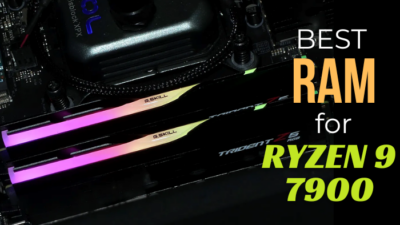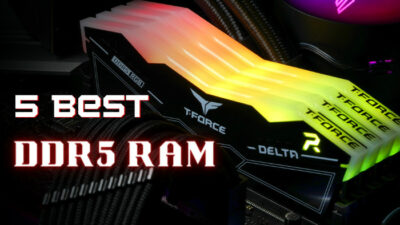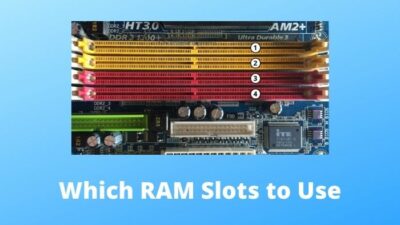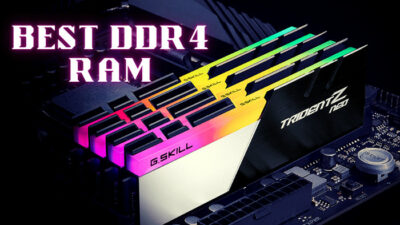DDR5 memory, introduced in 2021, indicated the arrival of the next generation of memory modules. With more bandwidth than before, it is bound to get you interested in putting one on your next build.
With Ryzen 7000 series and Intel 13th Gen embracing DDR5 natively, you can actually use one on your build right now. But should you opt for the latest and greatest in the world of RAM?
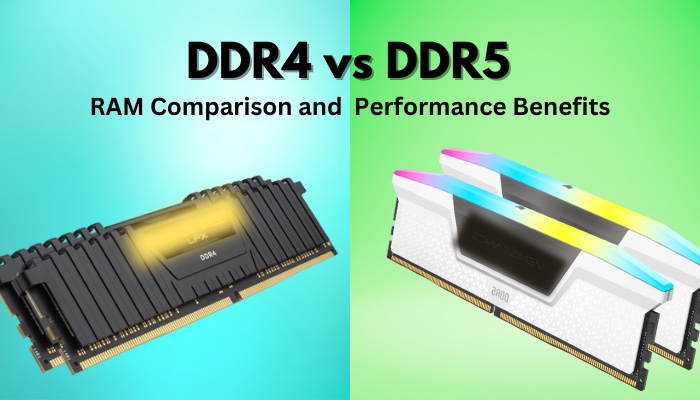
Read on to learn the differences between DDR4 and DDR5 and the performances you can expect from them.
So, let’s get started.
DDR4 and DDR5 Specifications
From operating voltages to frequency, DDR5 RAM has received a speed boost in most departments. The table below will give you brief information about these key specifications.
| DDR4 | DDR5 | |
|---|---|---|
| Bandwidth | 4.0 Gbps | 8.4 Gbps |
| Capacity (single DIMM) | 64 GB | 128 GB |
| Latency (in nano-seconds) | 16 ns | 40 ns |
| Operating Voltage (in Volts) | 1.2 V | 1.1 V |
JEDEC, the guys who set the standard for memory products, aimed to improve the DD5 spec sheet in almost every way compared to the previous generation. Right now, DDR5 is still in its infancy, so we are yet to see super high memory clock speeds. But you can expect DDR5 to reach a mind-boggling 8400 MHz in the future.
Let’s see what improvements you get a bit more in detail.
Slot Design
Below, you can see a stick of both generations of RAM. A normal glance will not reveal anything special between the two, but from an engineering point of view, the difference is aplenty.
Every memory module is designed to work in a specific slot. This is similar to a lock-key analogy.
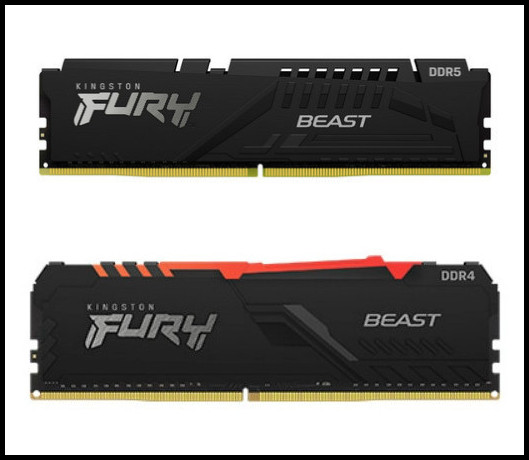
If you look at the golden-colored notches below each memory module, you will find there are a certain number of ridges present there. Precisely there are 280 connectors for both DDR4 and DDR5 RAM.
The difference lies in the arrangement of these notches. DDR4 memory will simply not fit on a motherboard with a DDR5 slot and vice versa.
Bandwidth
The fastest consumer DDR4 RAM has a frequency of 3200 MT/s (Mega transfers per second). With DDR5, the base frequency now starts at 4800 MT/s. Consider these just the base speeds that you can expect with this generation.
The faster units focused on gaming can go as high as 6400 MT/s. Unsurprisingly expect to shell out twice as much for getting such speeds.
The higher speeds mean you are getting a much higher bandwidth of 38 Gbps with DDR5 compared to 25.6 Gbps with DDR4.
This is extremely important in tasks sensitive to memory, such as video editing or working with a large spreadsheet, where the CPU frequently accesses files from memory.
Capacity
DDR5 brings a large capacity of memory to single sticks, never seen before. With DDR4, 64 GB was the max amount. Now 128 GB of memory can be accommodated on a single stick of DDR5 RAM.
Though in theory, DDR5 can have up to 512 GB of memory in a single stick. That, however, would be limited to the server space where ECC memory is the norm.
Using these, the upcoming workstations can rock memory upwards of 512 GB, which is a stupendous amount. You certainly do not need such amounts ‒ studios that work with CGI for movies are ideal candidates for such rigs.
As for now, 128 GB is the maximum memory that Ryzen 7000 or Intel’s 13th Gen processors support. The maximum capacity that you get with a single stick is 32 GB. This will change with time when we will see higher dense memory entering the market.
Latency
You can recognize the memory latency by looking at the CAS Latency values on the memory packaging. Lower latency means your computer can send/receive data in batches in a faster time.
The fastest DDR4 memory has a latency of 16 ns. Right now, the best DDR5 RAM available has a latency of 40 ns. But as it can transfer data faster than DDR4, the overall speed is quicker.
You also need to consider that these are the first generations of DD5 memory. With time manufacturers will release RAM with faster speeds, and that will bring down the overall latencies to a much lower value than what DDR4 has right now. Imagine the speeds you can expect when the latencies reach the level of DDR4 memory.
Voltage and Channels
DDR5 requires 1.1 V to operate. For comparison, the DDR4 variant requires 1.2 V. A lower voltage means longevity for your memory.
In addition, you get a power management chip(PMIC) that regulates the voltage to the memory, built right into the RAM. DDR4 RAM relied on a chip in the motherboard for this.
Now let’s look at channels. Think of these as pathways through which data can travel.
DDR4 RAM has a single 72-bit bus (64-bit for data and 8-bit for error correction). With DDR5, you get two 40-bit channels (32-bit for data). While the bus width does not increase to accommodate more data, with twice the channels, you are increasing the data transfer rate.
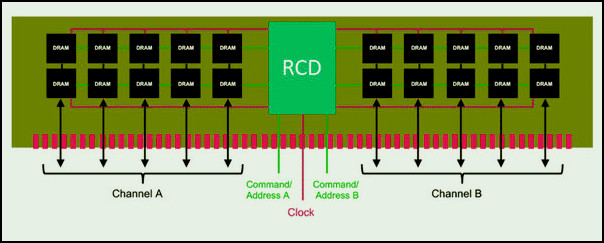
Now think about this, we all recommend getting the memory in dual channels to increase the transfer speed. With twice the number of channels built in, with a dual-channel setup, you can quadruple the speed of your memory. This is the speed DDR5 brings to the table.
If you were wondering whether DDR5 is backward compatible, read this fantastic piece.
In addition, you also get temperature sensors built into the memory itself. That means you can finally check if the memory is getting hotter. As DDR5 RAM will do a lot of data transfers than the earlier generations, this feature will surely come in handy.
Having such innovations is good, but what about real-world performances? Do you finally become a good gamer by rocking the fastest RAM on your build? That is what we explore in the next section.
Performance Benchmarks
For the performance comparison, we have placed three RAM modules against each other. Every module has a capacity of 16 GB, which in total is 32 GB running at dual-channel.
The DDR4 memory we have used is Kingston Fury Renegade, one of which runs at 3200 MHz and the other at 3600 MHz. Both of these have a latency of CL-16. For the DDR5, our choice was Kingston Fury Beast running at 5200 Mhz with a latency of CL 40.
Let’s look at the rest of the test bench.
| Processor | I5 12600K 3.70GHz 10 cores |
|---|---|
| Motherboard (DDR4) | Gigabyte Z690 Aero |
| Motherboard (DDR5) | Asus ProArt Z690 |
| Graphics Card | Asus TUF RTX 3090 |
For the benchmarks, we have some memory-specific synthetic tests and a few games running at 1080p ultra settings. The point of the testing is to see whether DDR5 gives out the desired performances that are expected from it.
First off is Geekbench 5.
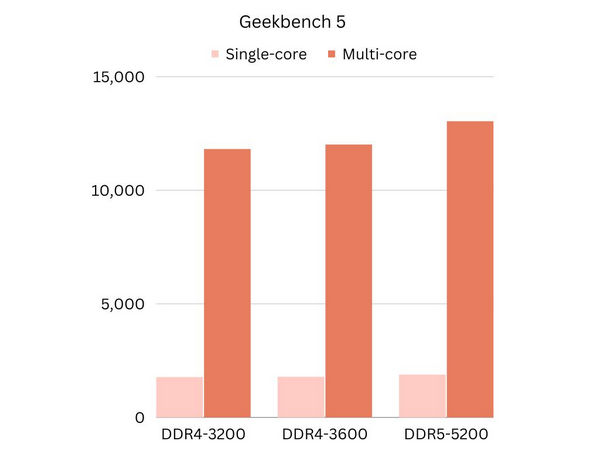
This is more of a CPU-restricted test, but you get a 6.2% performance uplift for single-core tests and 10% on multi-core tests when going from DDR4 to DDR5.
Next off is Puget Bench for Premier Pro. This tests real-time video editing workloads on your computer. A higher score indicates a better performance.
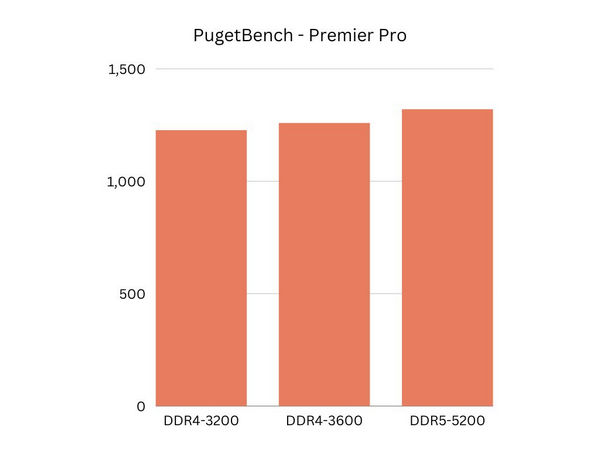
Here, DDR5 performs 7.5% faster than the DDR4 platform. While the difference isn’t astronomical, it’s nice to get an uplift.
The Adobe Photoshop test for Puget Bench also shows similar results.
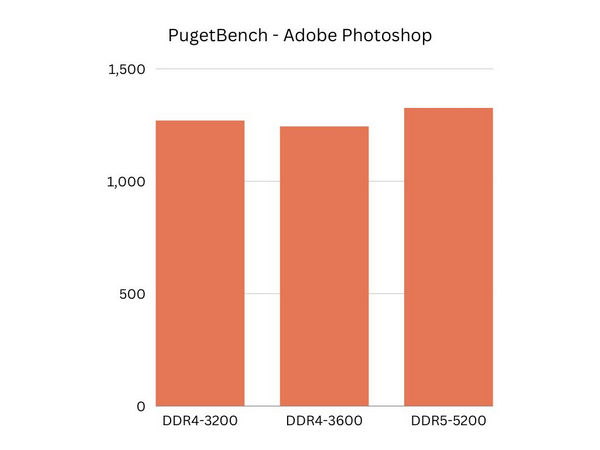
Here, some anomalies popped up in our results. The faster DDR4 RAM performs slower than the lower-clocked one. The DDR5, as usual, leads with a 4.4% greater score.
The Next test involves Da-Vinci Resolve, another application used for video workloads.
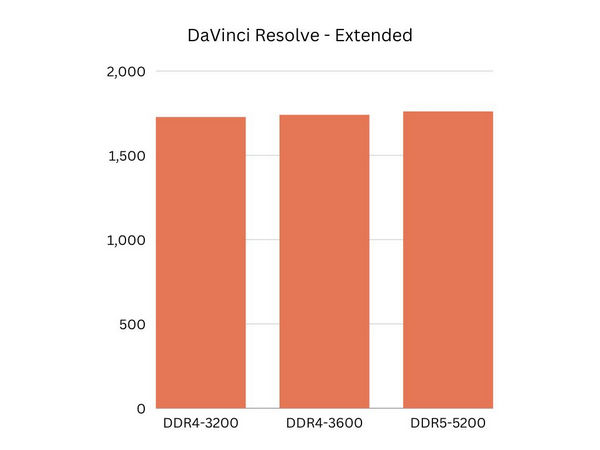
The difference here is so minimal that we cannot consider a substantial win for DDR5. It is only 1.9% faster than DDR4.
Now onto some gaming benchmarks. We ran Red Dead Redemption, FarCry 6, and Battlefield V at ultra settings at 1080p.
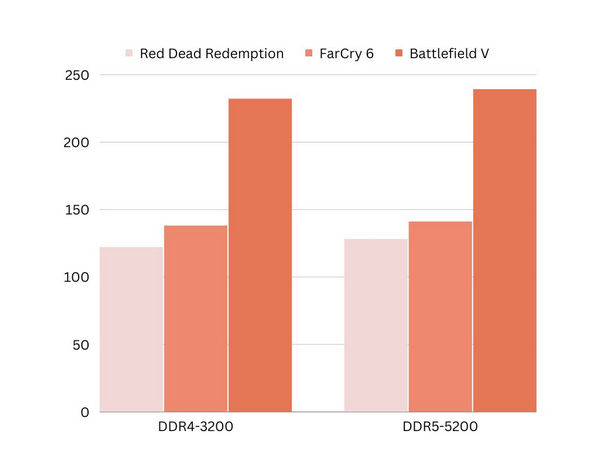
I have not included results for the DDR4-3600 module, as the differences are extremely minimal. Now coming to the performance gains, it is less than 5% for all the titles on our test bench.
Should You Upgrade Your RAM from DDR4 to DDR5?
Now that we have the results let’s analyze the findings.
From the productivity tests, we had the most gains when editing photos or videos using Adobe’s software suite. However, on Geekbench, the performance difference was around 6 percent.
During gaming sessions, any advantages provided by DDR5 diminish. We got scores that did not separate the platform that much.
Before coming to the final conclusion, let’s take a look at the prices these memory modules are going for. You can buy the DDR4 3200 Mhz variants for around 70 dollars, while the 3600 MHz can be had for under hundred bucks.
DDR5 prices have come down considerably compared to last year. Now you can get a 32 GB kit for close to 100 dollars. The RGB versions are not far away, costing an extra 20-30 bucks.
Time for the verdict, then. Should you go for DDR5 RAM over DDR4?
If you are building a new system with the latest processor, then go for a DDR5-based system. As both AMD and Intel already have support for them, plus the prices of memory are decreasing every day, it makes sense.
But for systems with the last generation of CPUs, DDR4 has more value, and you can get a fast RAM kit for much less. So, if you are already on AMD’s 5000 or Intel 12th gen, the upgrade is not worth it.
Also, consider the scenarios based on the work you would typically do on your PC.
For gaming, you are better off removing bottlenecks from your system than spending a price premium for DDR5. For example, allocate the budget towards your graphics card than spending extra bucks on RAM.
On the productivity side, you do get improvements in Video and Photo editing. It’s only been less than two years since DDR5 became mainstream, so we can still consider it in its infancy. With time, developers can leverage the extra bandwidth DDR5 provides and optimize the applications.
Frequently Asked Questions
Is DDR5 RAM better than DDR4?
DDR5 brings twice the bandwidth than DDR4. A higher frequency (up to 6400 MT/s compared to 3200 MT/s) and more data lanes (2 times 32-bit) help this.
Does DDR5 make a difference?
DDR5 provides marginal improvements in productivity tasks while no mentionable lead in gaming. You can expect it to provide dividends in the future when it is widely adopted.
Can I use DDR5 RAM in a DDR4 motherboard?
No, DDR5 RAM has a different design than DDR4, which requires it to use a different slot on the motherboard. You will damage the DDR5 RAM if you try to connect it forcibly.
Does DDR5 need a new motherboard?
Starting from Intel’s 12th generation of Core and AMD’s Ryzen 7000 processors, you get native support for DDR5 RAM. That means buying a motherboard that states this on its packaging.
Final Words
That’s all for today’s article.
I hope now your decision is made easier on which memory to opt for. DDR5 has some great specs, and one will surely appreciate it when applications can utilize them. Till then, DDR4 is here to stay and will continue providing the best bang for your buck.
So, make the best decision and let the torch of pc gaming shine brightly.

